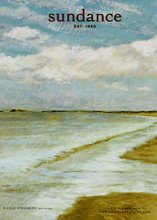American or Western style woodblock printing uses brayers to roll a coating of ink onto the block which results in a very solid, opaque color. The paper is dry and often run through a traditional printing press, although not always.
The Japanese style differs because you are working wet on wet... water based ink brushed onto dampened wood and brushed like you were shining your shoes to spread the ink evenly. Then a lightweight Japaneze paper, (Washi, Kozo, Iyo, or the like) which has been dampened and left overnight to evenly moisten, is then placed over the inked plate and transferred to the paper by rubbing with a hand baren. What it gives you is such a beautiful, delicate, transparent quality. Absolutely delicious.
I am only at the beginning of my learning and experimenting. Like most printing techniques, there is a lot of variables to be mastered. How wet should the paper be, how much ink, how hard to press the baren and for how long to get an even distribution on the paper, how much rice paste to add to the ink, how to make sizing glue and size the paper. All this without even considering the design or carving of the block.
Here is my first attempt in class (I know I know I'm always over eager and ambitious on my first try).
I had done a painting of this image that I really liked and was trying the composition in the graphic medium. I was happy with the image, not so much the color. Since each color was a separate block I am able ink and re-ink to my heart's content. I wasn't totally unhappy with the result.
Here are the many tools of this particular medium....

 My second image in class I still have not perfected. It was another image, first painting, then etching, now woodblock. The etching is the inspiration (upper right hand corner). I did not have great tools, but rather a kindergarten carving set (or what it felt like anyway) so I did not get the line work I wanted. There is still a way to fix the image I just haven't gotten back to it since acquiring my semi professional tools... that are sharp! Key... sharp tools make for fun while working.
My second image in class I still have not perfected. It was another image, first painting, then etching, now woodblock. The etching is the inspiration (upper right hand corner). I did not have great tools, but rather a kindergarten carving set (or what it felt like anyway) so I did not get the line work I wanted. There is still a way to fix the image I just haven't gotten back to it since acquiring my semi professional tools... that are sharp! Key... sharp tools make for fun while working.
I have at last begun carving some images in my studio. It has taken a few months to amass all the accoutrement needed to go from starting point (carving) to finish line (printing). The top image is the key block print for my very first 3 color block print, solo. It is inspired by the painting Canyon View that was shown through the Sundance Catalog.
Below is a block finished this morning. The print is the key block, which IF I choose to do more than one color would be used to align the registration marks on the next block. I do like the simple black on white.

Here is the look of the block once the image is transferred from the rice paper to the woodblock. It is first drawn onto a thin washi paper with a dark pencil and then rice paste is applied evenly to the wood surface. The paper with the pencil image is then put face down into the rice paste and slowly, carefully rubbed away until the only thing left is the drawing on the wood. Beautiful.

 Here is the sketch which was transferred to the rice paper. A new series? possibly. For some reason I'm drawn to this cavern, cut away, hole in the mountain, feat of man for man, coastal, composition..... okay I'm just talking, I'm not sure what it means yet but I like it.
Here is the sketch which was transferred to the rice paper. A new series? possibly. For some reason I'm drawn to this cavern, cut away, hole in the mountain, feat of man for man, coastal, composition..... okay I'm just talking, I'm not sure what it means yet but I like it.















No comments:
Post a Comment